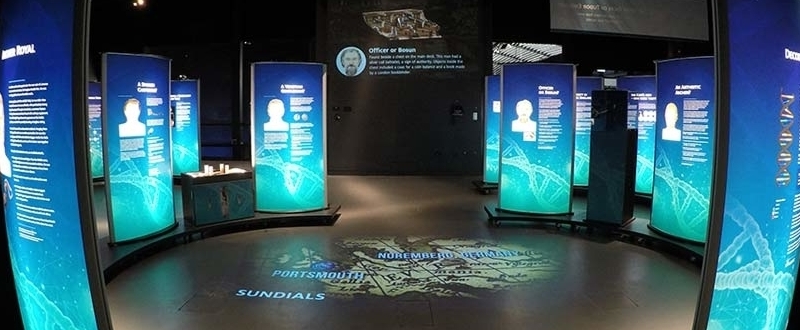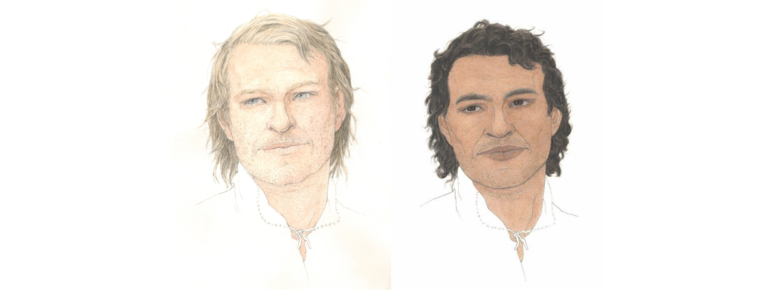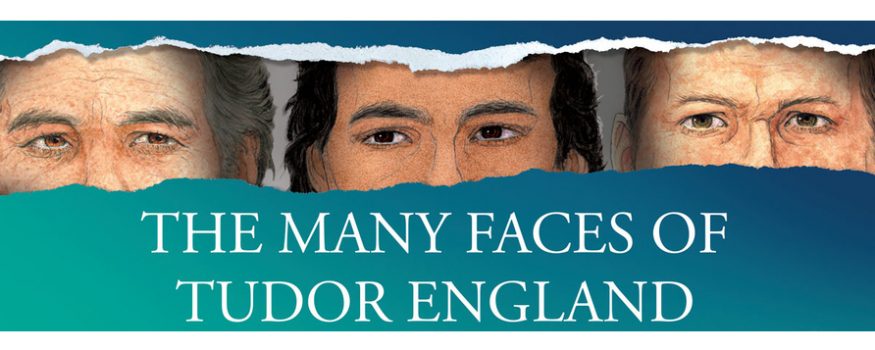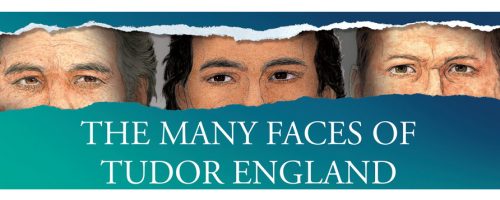A new exhibition The Many Faces of Tudor England has opened at The Mary Rose Museum in Portsmouth. Running until 31 December 2019, the exhibition explores the latest scientific and genealogical findings into the crew of the Mary Rose. The display is in dialogue with the new documentary Skeletons of the Mary Rose: The New Evidence, part of the award-winning series Secret Histories on Channel 4.
Through interactive screen, documentary footage, print material and a reproduction of an intriguing crew member nicknamed Henry, the exhibition helps answer important questions about the crew – what they looked like, where they were born, and their genetic heritage.
Prior to the new discoveries, theories on the crew’s identity were based on where they were found and the possessions that surrounded them. Records preserve only a few names of those who worked on the Mary Rose over her 34 years of service, and most of the identities of those who lost their lives on 19 July 1545 – the day the Mary Rose sank in the Battle of the Solent – will never be discovered.

The new research has led to a more in-depth understanding of the ship’s crew and their lives.
“The Many Faces of Tudor England delves not just into the crew’s physical appearance and roles on board, but deeper into their lives,” said Dr Alexzandra Hildred, Head of Research and Curator of Ordnance and Human Remains at the Mary Rose.
“Based on new scientific evidence derived from isotope analysis as well as DNA testing of teeth and bones, the exhibition takes you on a journey of discovery, exploring the backgrounds of a number of the crew. It also considers what the finds from the Mary Rose can tell us about the diversity and globalisation in Tudor England, 500 years ago.”
‘Henry’, one of the most complete of the 92 reconstructed crew skeletons, is among the most intriguing discoveries. His bones and teeth tell the story of this life, placing him somewhere between 14 and 18 years of age. His left shoulder blade had deep depressions where ligaments attached, and he had well-developed muscles. His spine however showed signs of osteoarthritis and degenerative disease.
A range of chemical composition analyses suggest he was born within 50km of the coast and raised in Britain in an area of high rainfall – the West or South – and with Palaeozoic geology, such as that found in North Devon. His diet was high in animal protein – land, rather than marine. Analysis of Henry’s DNA suggests he came from North Africa, making him genetically similar to modern day Moroccans, Mozabite Berbers of Algeria or individuals from the Near East, although his mother may have hailed from Britain.
Dr Sam Robson, Senior Research Fellow and lead bioinformatician on the project said the research “has been an incredibly interesting to be a part of, and we have learned a huge amount on the way. Being able to take a snapshot of the past and uncover previously unknown information about these characters from centuries ago has been very insightful.”

© Oscar Nilsson and The Mary Rose Trust
Other surprising discoveries include the Archer Royal, who was found trapped under the real axle of a bronze cannon on the main deck. Due to the famed longbow skills of English forces at the time, it had always been presumed that this archer was English. However, chemical composition analyses on his remains suggests he was not born in Britain and in fact grew up in a hotter climate away from the coast. It is now believed that he may have come from inland North Africa, more than 50km from the coast.
The forensic artist’s impressions of the Archer Royal above demonstrate how much these discoveries have changed what was previously assumed about the crew.
Tickets for The Mary Rose can be purchased from maryrose.org, or from The Mary Rose Visitor Centre or museum reception. For group bookings please visit maryrose.org/groups.










